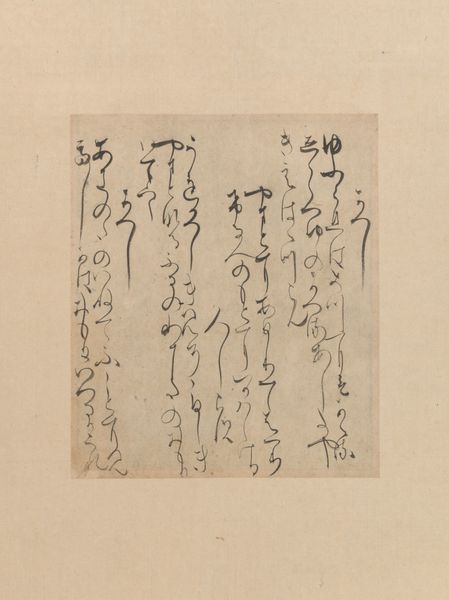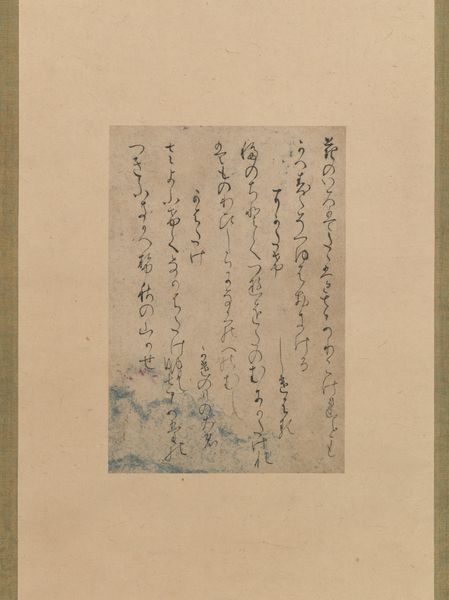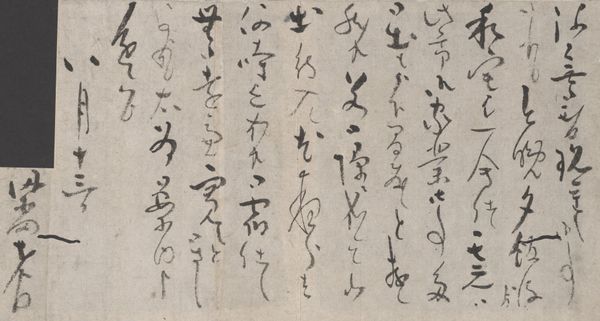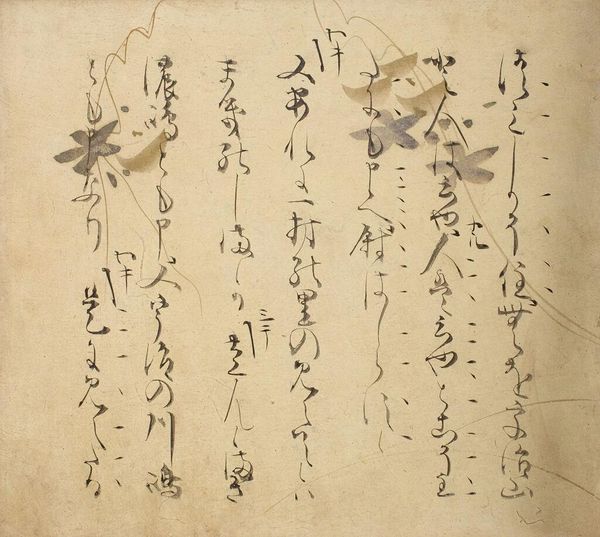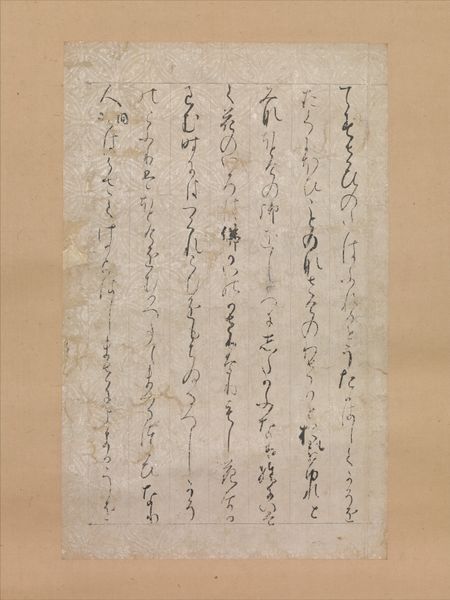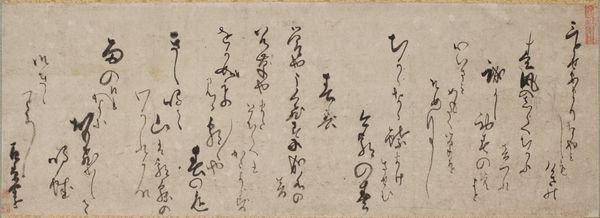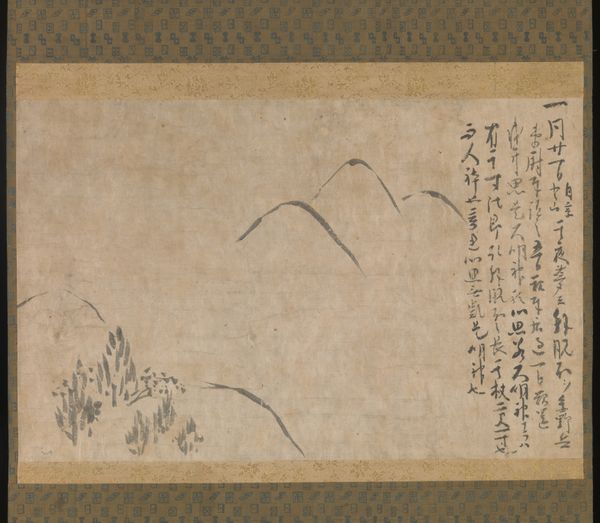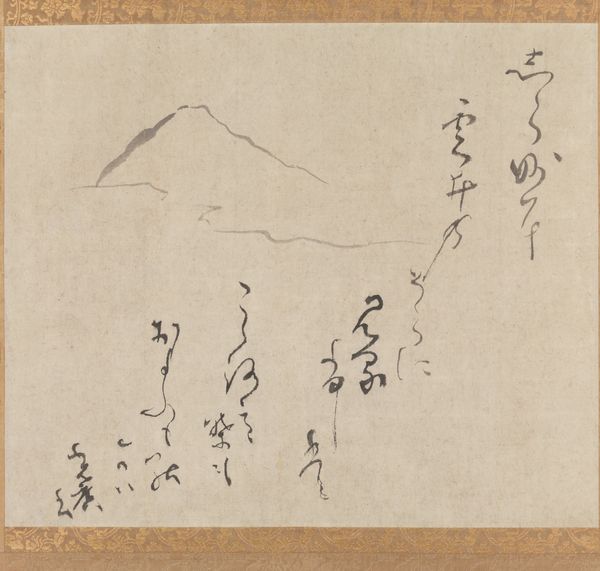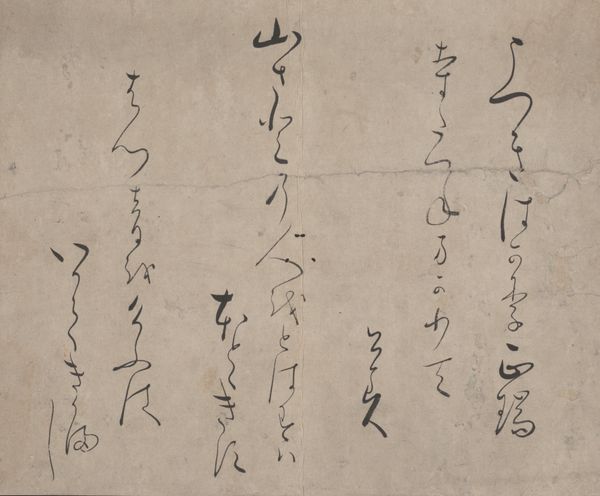
Poems from the “Collection of Poems Ancient and Modern,” known as the “Murasame Fragments" (Murasame-gire) 1300 - 1333
0:00
0:00
#
aged paper
#
toned paper
#
asian-art
#
sketch book
#
japan
#
personal sketchbook
#
journal
#
sketchbook drawing
#
watercolour bleed
#
watercolour illustration
#
sketchbook art
#
watercolor
#
calligraphy
Dimensions: Image: 10 × 6 5/8 in. (25.4 × 16.8 cm) Overall with mounting: 64 9/16 × 13 7/8 in. (164 × 35.2 cm) Overall with knobs: 64 9/16 × 15 3/4 in. (164 × 40 cm)
Copyright: Public Domain
This fragment of calligraphy, made by Nijō Tameyo in the late Kamakura period, showcases the beauty of Japanese poetic tradition. Tameyo was tasked with compiling the imperial anthology “Collection of Poems Ancient and Modern,” of which this piece is a surviving fragment. The poem is brushed in ink on delicate paper, its texture and absorbency guiding the strokes, lending a unique quality to each character. The ink, its depth and flow controlled by Tameyo’s skilled hand, dances across the page. Calligraphy is not just writing; it is a performance, a record of the artist's breath, mind, and body made visible. The tools, simple as they are – brush, ink, paper – demand years of disciplined practice to master. Consider the cultural context: calligraphy was a pursuit of the court elite, demanding quiet contemplation and skilled artistry. The “Murasame Fragments" are windows into the lives, labor, and values of the imperial court. They remind us that even the simplest materials, when touched by skill and imbued with meaning, can transcend their origins to become art.
Comments
No comments
Be the first to comment and join the conversation on the ultimate creative platform.
